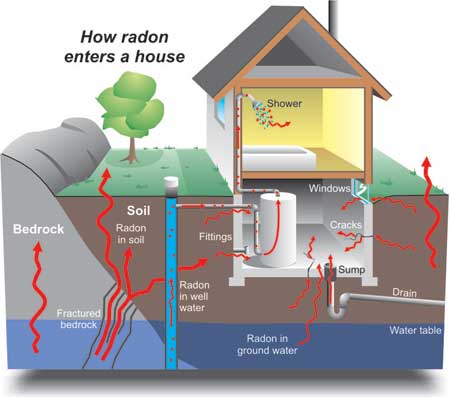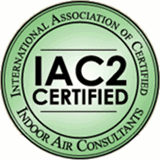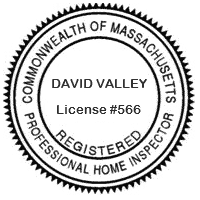Massachusetts Home Inspections YOUR INVESTMENT IS MY CONCERN

Radon In Your Home

Most indoor radon enters a building from the soil or rock beneath it. As radon and other gases rise through the ground, they can become trapped beneath the structure, building up pressure. Because air pressure inside homes is typically lower than the pressure in the soil, this difference forces gases through cracks and openings in floors and walls. Once inside, radon can accumulate and become concentrated, especially in poorly ventilated areas.
Common entry points that allow radon into your home:
*Cracks in solid floors and foundations below grade
*Construction joints
*Gaps in suspended floors
*Sump pits and open floor drains
*Cavities in foundations below grading
*Gaps in floor around utility penetrations (plumbing and wiring)
*Crawl spaces that open directly into the building
*The water supply (especially well water, though this is less common than soil gas entry)
Radon can also be present in water, especially well water. When this water is used—for example, from a faucet—some of the radon is released into the air. Typically, about one ten-thousandth of the radon in water escapes into the indoor air. The higher the radon concentration in the water, the more it can contribute to indoor radon levels. Trace amounts of uranium, which produces radon as it decays, may also be found in certain construction materials such as concrete, brick, granite, and drywall. While these materials can emit radon, they are rarely the primary source of elevated indoor levels. In some cases, even outdoor air drawn into a building can slightly contribute to indoor radon concentrations.
The average radon level in outdoor air is about 0.4 picocuries per liter (pCi/L), though it can be higher in certain regions. While some geographic areas are more prone to radon issues, any home—regardless of age, construction type, ventilation, or whether it has a basement—can have elevated radon levels.
Radon levels are often higher in homes that are well-insulated, tightly sealed, or built on soil rich in uranium. Basement and first-floor areas typically have the highest radon concentrations due to their proximity to the ground. Homes located below the third floor in multifamily buildings are also particularly at risk.
Here is what my clients have to say about my home inspection services:
Press F5 (on your keyboard) for additional testimonials
Dave had an impressive website that seemed to be too thorough to be anything but genuine. The thing that seemed to sell me was that he says right on his website that you may pay a little more for his service, but that his quality is higher. So I decided to give him a try even though I had no reference from another person hoping for someone of top quality. I was not disappointed. He was at the home early as promised and had done an inspection of the exterior and was writing up notes so that when I arrived, he walked me through the exterior first. Even with his early arrival, we were still there for about 3 hours looking through every little corner and cubby. He would occasionally stop and fill out his inspection forms which were easy to follow and read; he gives you a full folder of his notes that are well organized.
Dave was open to all questions and concerns so every time I saw something that was potentially concerning to me, he would look, give his opinion and often shared other experiences with similar circumstances. He also had a good sense of humor which helped to lighten what can be a stressful experience (having someone pointing out problem items that you didn't see). I would highly recommend Massachusetts Home Inspections.
Michael














